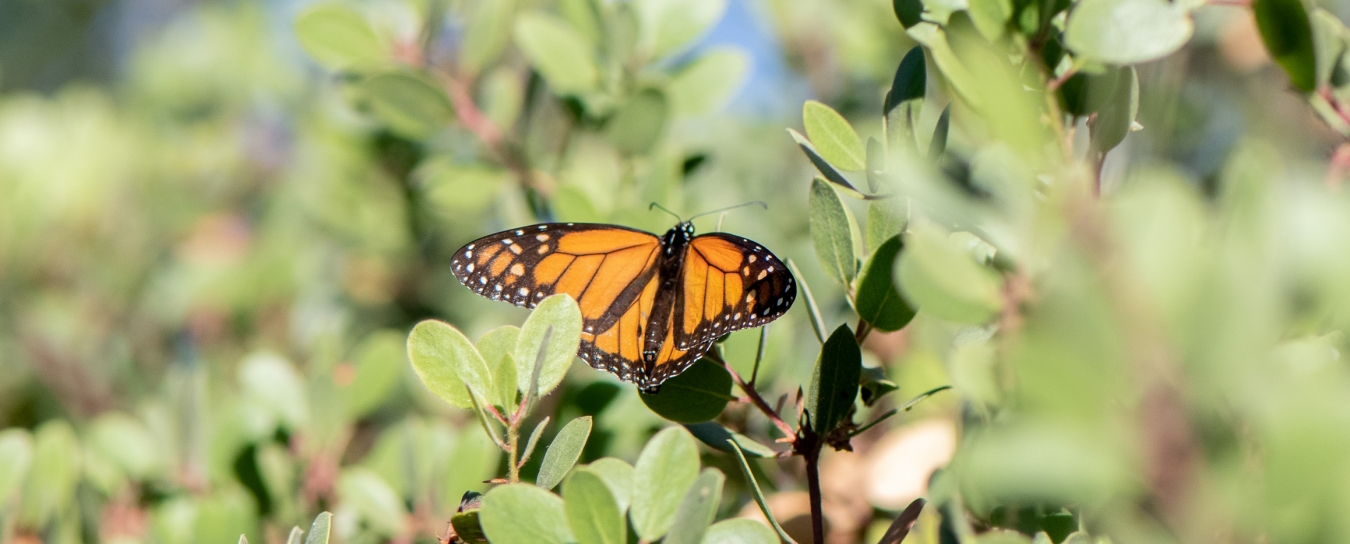
Invertebrates
See our handy guide to critters found in local homes and our Central Coast Butterfly FAQ. Browse the insects and other terrestrial arthropods we’ve identified. Check out local marine invertebrates, particularly bivalve mollusks and intertidal organisms.
- Anthropology
- Rocks & Fossils
- Invertebrates
- Vertebrates
- Botany
- Astronomy
- Fungi
- General
- Recently Asked
May I trouble you for a beetle ID?
I took this photo last weekend at the SB Botanic Garden. I couldn't find an example of one in the online beetle ID sources I looked at.
Thank you!
Curator Response
Hi Kevin,
Thank you for sharing this beetle with us! I was just sorting and identifying this group in the collection today.
This is Lema daturaphila, a distinctively colored native species of leaf beetle (family Chrysomelidae) sometimes referred to as the Three-lined Potato Beetle. It's commonly found in our area feeding on plants in the family Solanaceae (the family that includes potatoes, tomatoes, tomatillos, eggplants, and peppers). However, in my experience, as suggested by the scientific name and as corroborated by your photo, they are most commonly found on wild plants of the genus Datura (jimsonweed). Both adults and larvae chew holes in the leaves; on garden plants of the aforementioned species, they can be minor pests. In your photograph, the leaf that the beetle is sitting on a leaf that has clearly sustained some damage, possibly from actions of this beetle and its cohort.
Interestingly, the valid scientific name of this beetle, Lema daturaphila, first appeared in the literature only in 1970, even though the critter was well-known for over 150 years prior. The previous name, Lema trilineata, turned out to be a homonym—meaning it was identical in spelling to a previously used name—and the rules of naming dictate that homonyms need to be replaced. To make things a little more complicated, this species has been frequently confused over the decades with another similar-looking species, Lema trivittata, which is said to have slightly narrower black stripes and the legs mostly red (note the legs are all black in your specimen). Based on my examination of specimens in our collection, I believe the current distinction between these two "species" is arbitrary, and they may truly represent only one species. I have collected beetles from the same plant at the same time that fit both descriptions along with intermediate-patterned ones. It is possible, however, that there are multiple species in a complex that can only be resolved by investigation of their DNA fingerprints. Obviously our understanding of this group of beetles (like most groups of beetles) is in need of an upgrade!
Stay curious,
Schlinger Chair and Curator of Entomology Matthew L. Gimmel, Ph.D.


